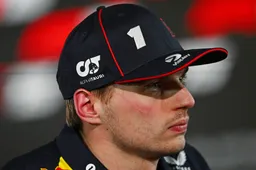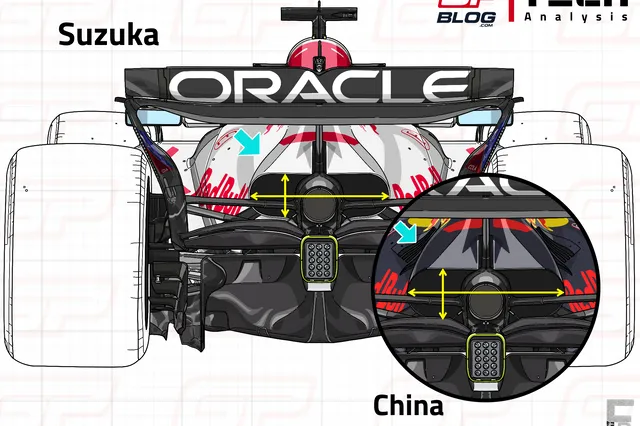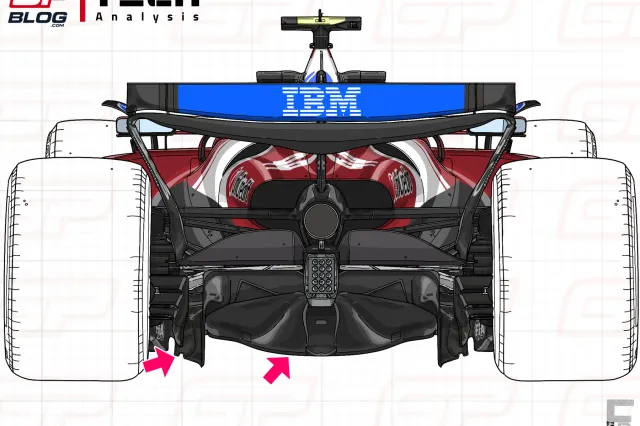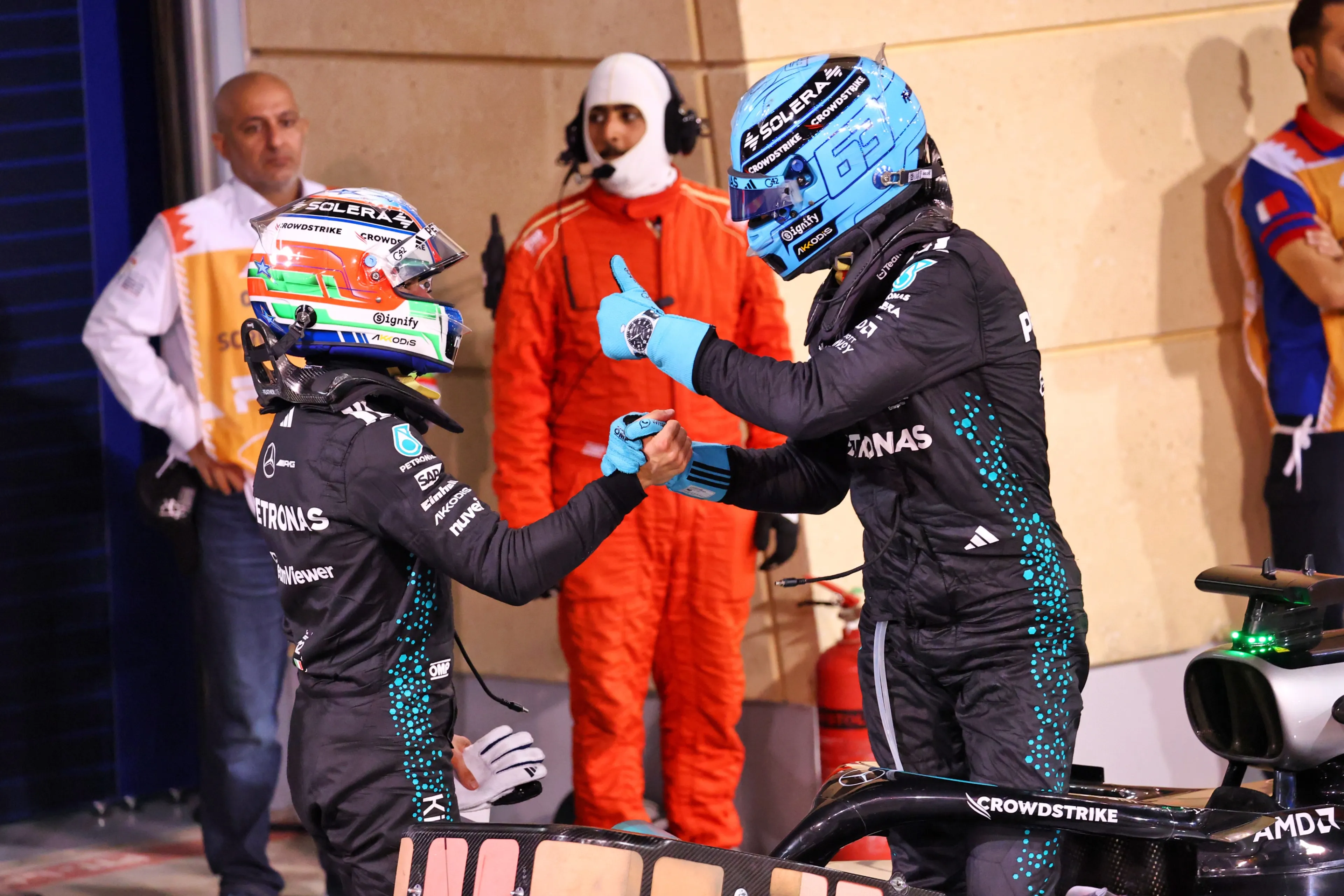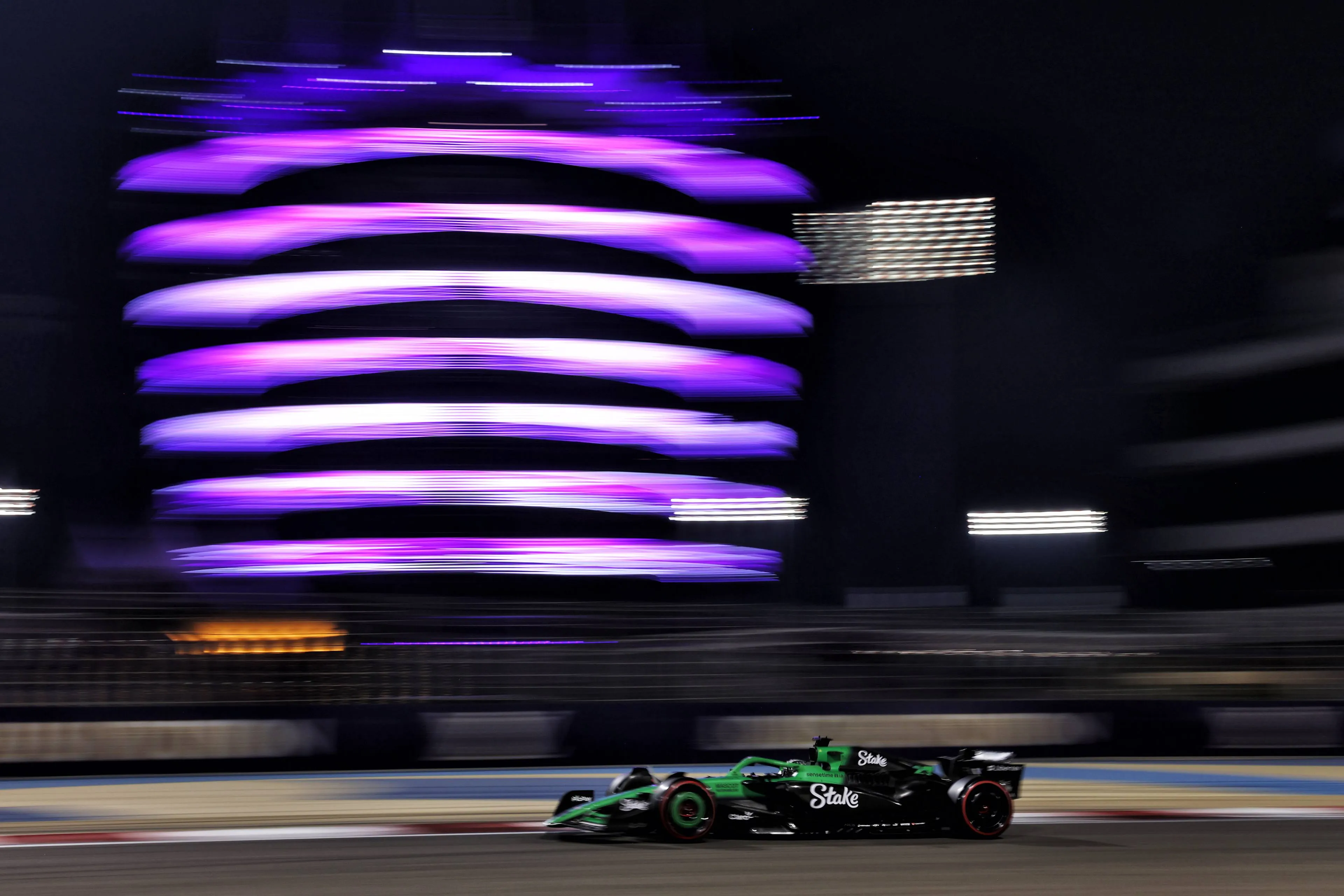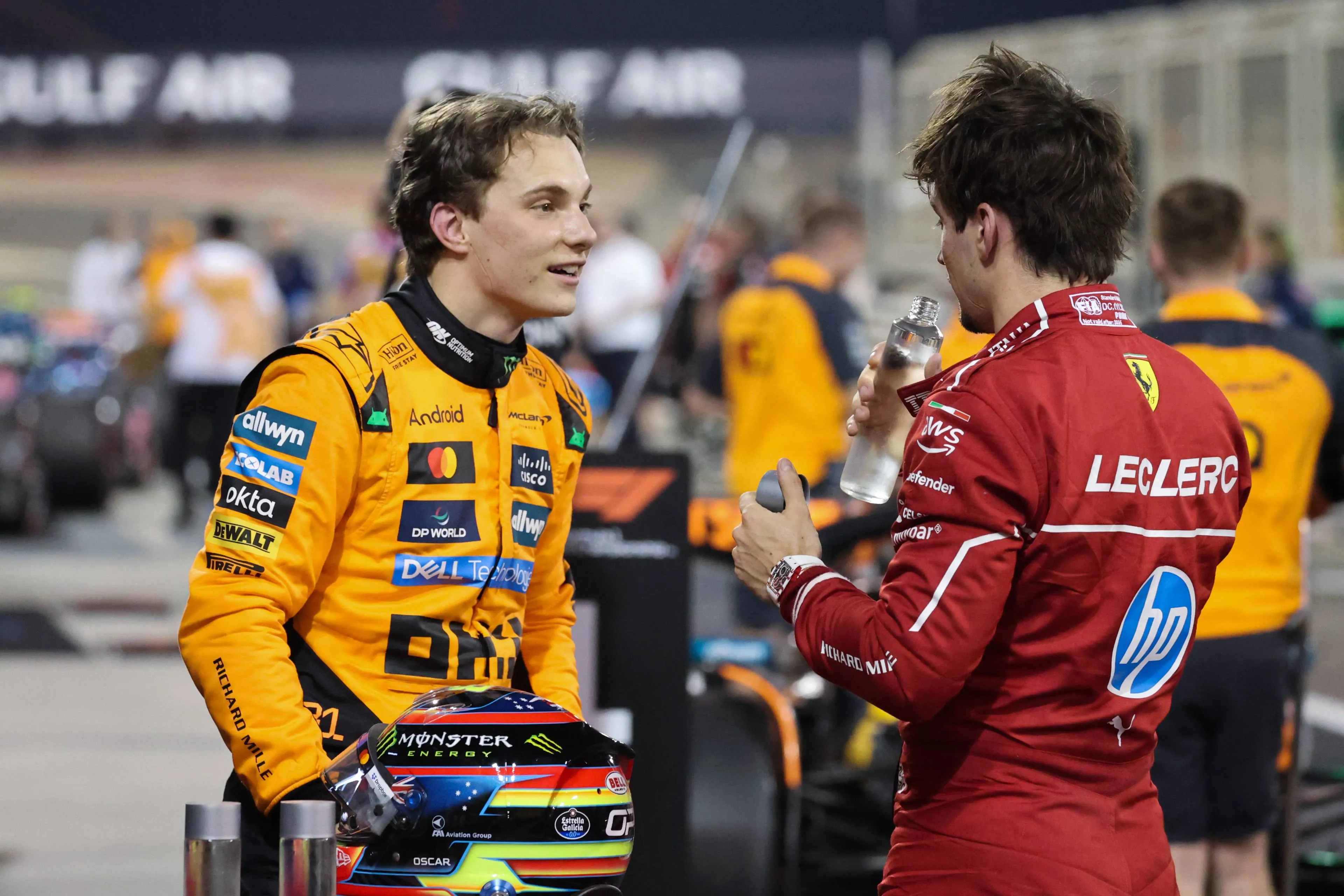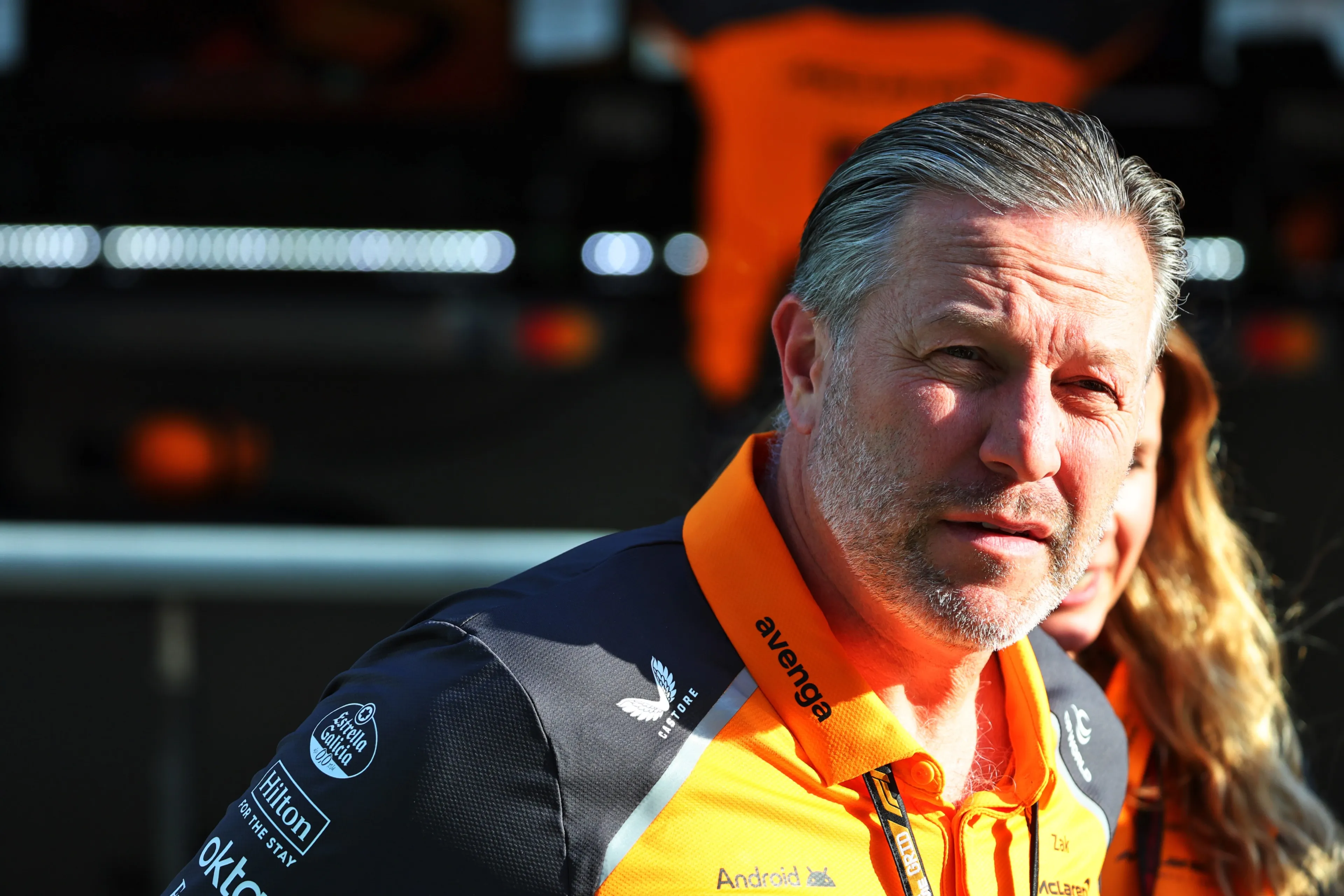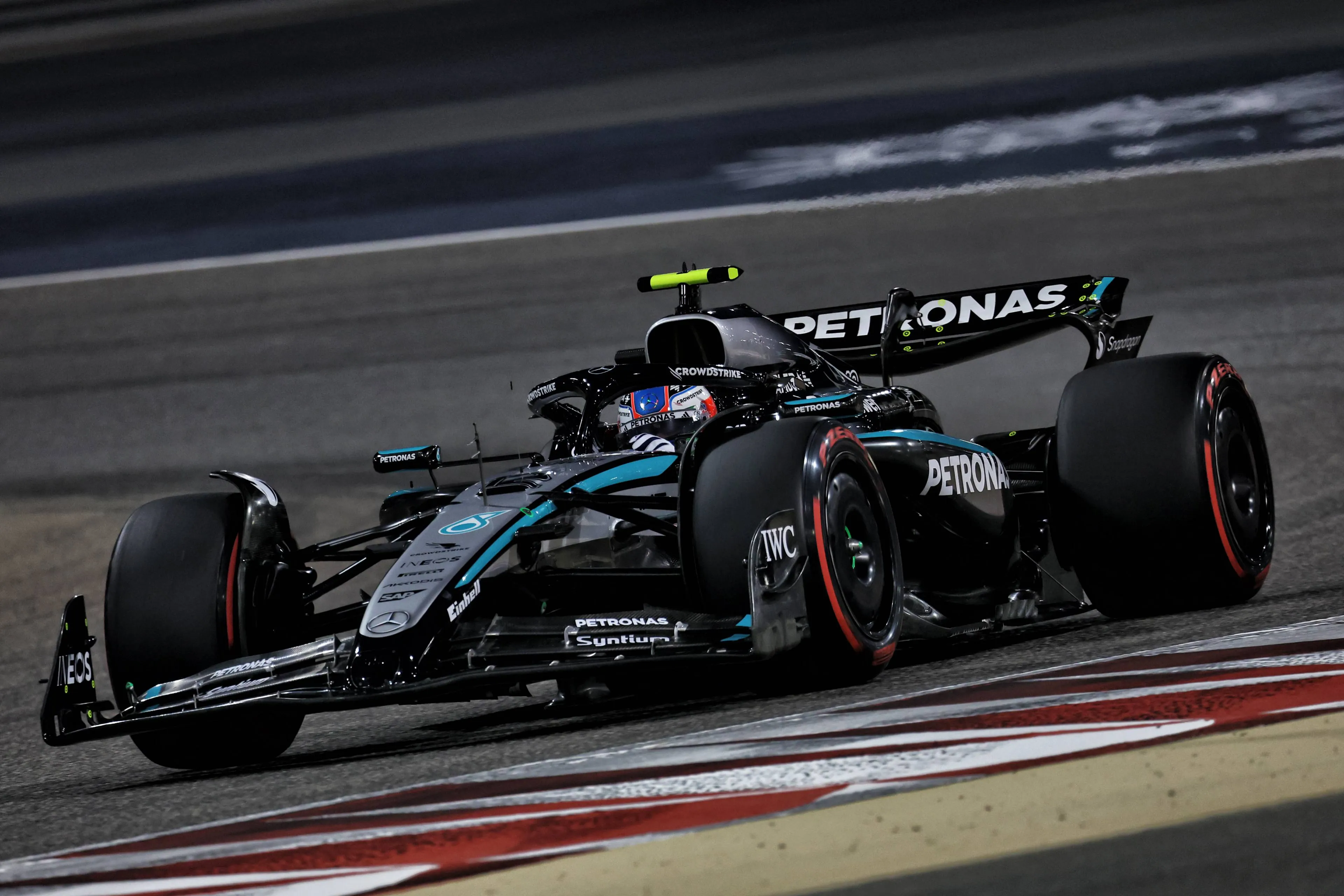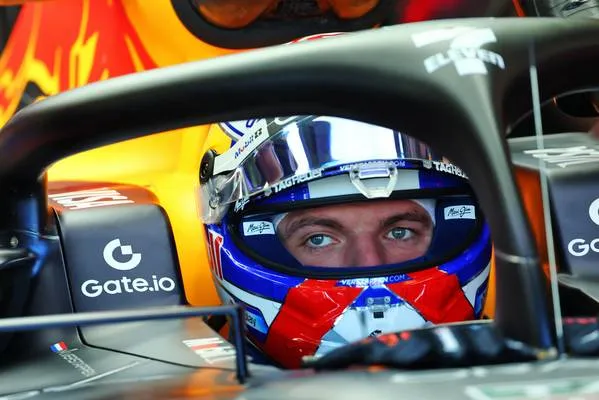F1 Tech | How Haas exploited Ferrari's old concept to solve porpoising in Japan
The beginning of the 2025 season for Haas has been better than previous years, but not without issues. The first race in Melbourne certified the comeback of proposing on the new VF-25 and the team decided to rush and bring a new diffuser in Japan to solve this huge issue. Let’s try to explain what’s behind these changes.
A start to forget
The Haas car that debuted on track in Bahrain had a very similar design to the one used last year, basically to spend more economic resources on the 2026 cars. Despite the “old” look, the new VF-25 proved to be competitive in slow speed corners in Bahrain, while the top speed at the end of the straights looked poor, mainly due to the very inefficient DRS, as highlighted by team principal Ayao Komatsu: “Every single straight is DRS and we can see on our data that our DRS performance is not great.”
Beyond from this aspect, that inevitably caused a loss of performance on long straights, Haas arrived in Australia confident that the work done during the winter was great.
However, as soon as the car hit the track on the bumpy layout of the Albert Park Circuit, one old big problem re-appeared: porpoising. This issue wasn’t evident in Bahrain due to the nature of that layout, which is characterised by only 3 fast corners.
In Melbourne, the VF-25 was bouncing a lot in all high-speed sections and struggled in particular through the 9-10 change of direction. Not surprisingly, Bearman suffered a huge crash in that chicane during FP1, destroying his car.
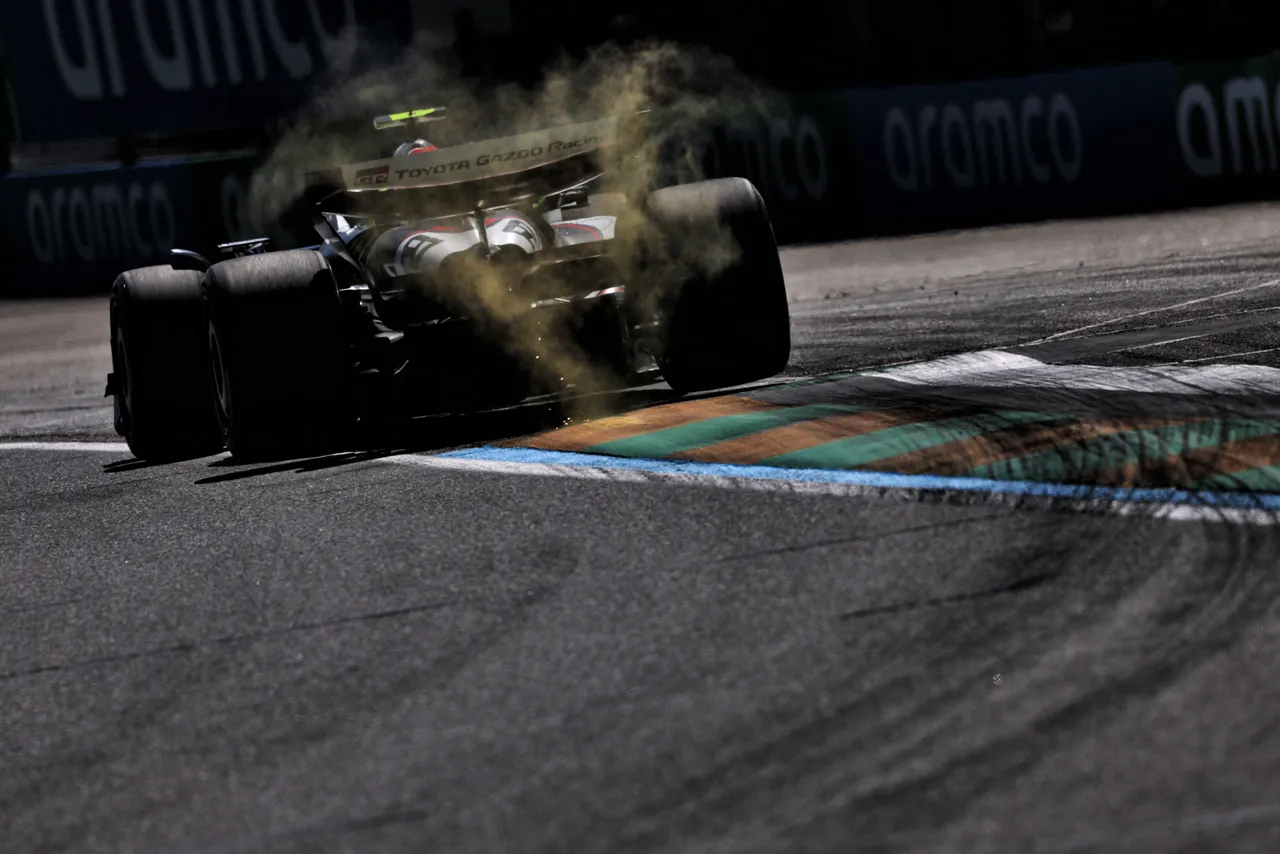
Haas’s engineers, in fact, started the session by running the car with a very low ride height, in order to maximise and take advantage of the level of downforce generated by the Venturi channels through the high speed corners of the track.
If the car hadn’t show this problem, their goal was probably to adopt a lower downforce rear wing, that would have improved the top speed on the 4 straights of the Australian Circuit, to reduce the losses related to their “poor” DRS design.
This didn’t happen, as proposing immediately appeared. Caught off guard and without effective solutions, the team decided to raise the car to prevent it, consequently making the car exiting its operating window and losing tons of performance both in the high speed and in the slow seed.
The rest of the weekend was a proper nightmare for the American team, with Ocon and Bearman who qualified last and finished the race in the same spots. At the end of the weekend, Team Principal Ayao Komatsu clearly underlined how proposing completely caught the whole team off guard during the first race of the season: “We didn’t see it in Bahrain, it’s just purely because of the type of corners. We saw snippets of it, but we didn’t understand the severity. As soon as we started running, it was pretty apparent.”
A solid perfomance in China
In China the scenario for Haas was completely opposite: the surface of the Shanghai International Circuit was extremely smooth and plain, giving engineers the chance to lower the car without facing proposing. The VF-25 looked like another car compared to Melbourne: thanks to the very low ride height, it could express much more downforce from the Venturi channels, having a very balanced behaviour both through the high speed corners and through the low speed.
Moreover, the cooler temperature faced during the race was a big help for Haas, as drastically reduced the tyre wear on the hards and made the one stop strategy the quickest. Haas’s strategists were among the first to understand this crucial aspect during the race, being one of the only midfield teams to adopt this strategy with both drivers, eventually (after Ferrari’s DSQ) finishing P5 and P8.
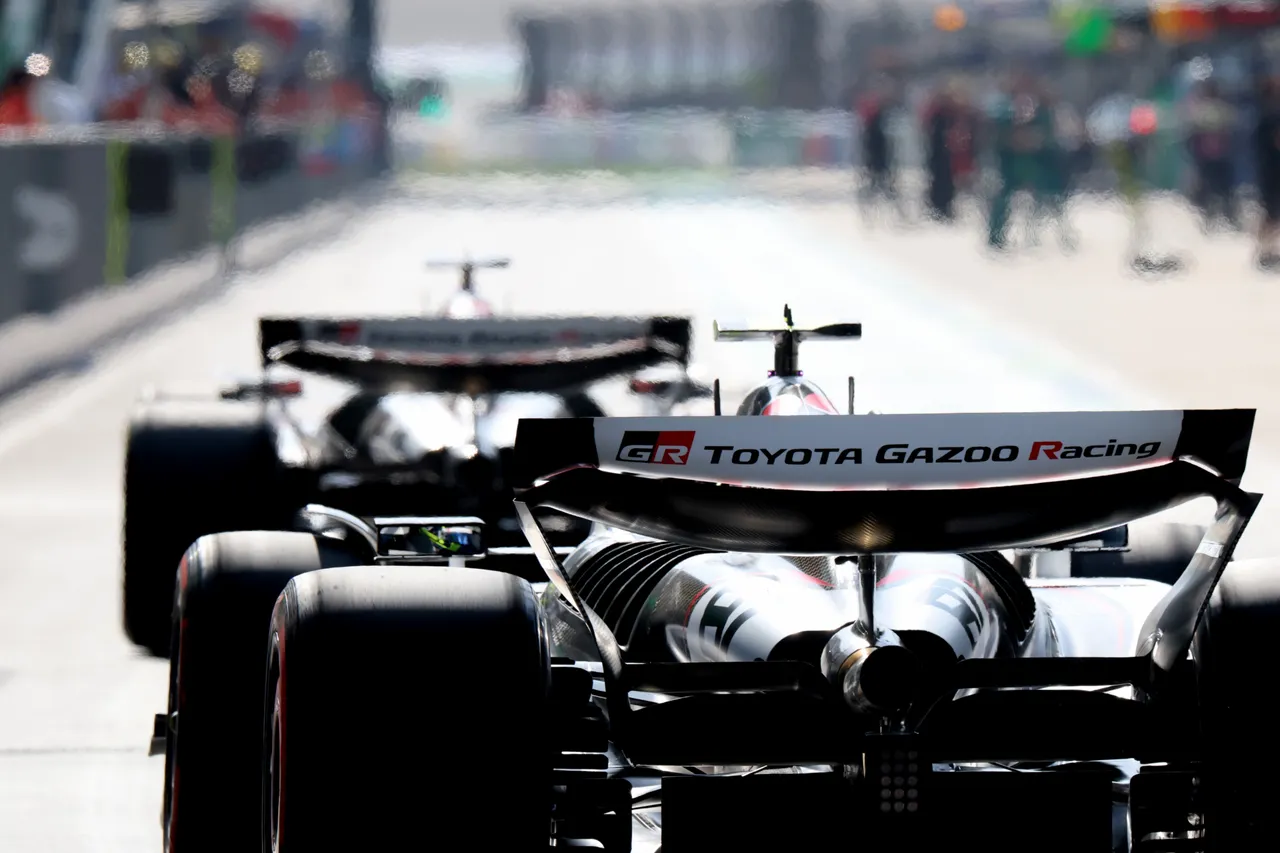
These two factors combined made the VF-25 enter its working window and express its full potential especially during the race.
After this great performance, the team was still worried that the proposing issues seen in Australia weren’t solved yet, but had been hidden by the smooth surface and by the favourable conditions faced in China.
New diffuser: old ideas make cars quicker?
For this reason, they worked hard in the week and a half before Japan, trying to study and find a solution to proposing, conscious that, if it had shown up again, would have been a huge problem. As a consequence, they brought a new diffuser in Suzuka, without even testing this new spec in the wind tunnel, as confirmed by Komatsu on Sunday after the race: “We chose a ‘shortcut’ in development, which could have gone very badly, but we said to ourselves: ‘Okay, this is the direction’. Only afterwards did we test it in the wind tunnel and confirm that it was the right one.”
This new component is characterised by a completely new design: as highlighted in the drawing below, the tail-end of the boat section now has a more pointed shape, with a much steeper trend towards the ceiling of the diffuser (red arrow on the right). The goal of this design is to stabilize the flow of air in this area of the diffuser at high speeds, preventing proposing from happening.
The old design produced a lot of suction in that area of the floor, thus generating a higher peak downforce, but it made it very difficult to establish it and keep the keel at a consistent height to the ground.
In fact, as downforce was generated, the keel got closer to the ground, the airflow through that area was interrupted, and the rear end of the car was raised as a consequence. Once the flow started licking the diffuser walls again, this process repeated, producing an oscillating effect known as proposing.
For this reason, Haas decided to move back to simpler, more conventional solution, that was, in theory, less profitable in terms of peak downforce produced, but stabilized the diffuser at different ride heights and speeds, avoiding proposing.
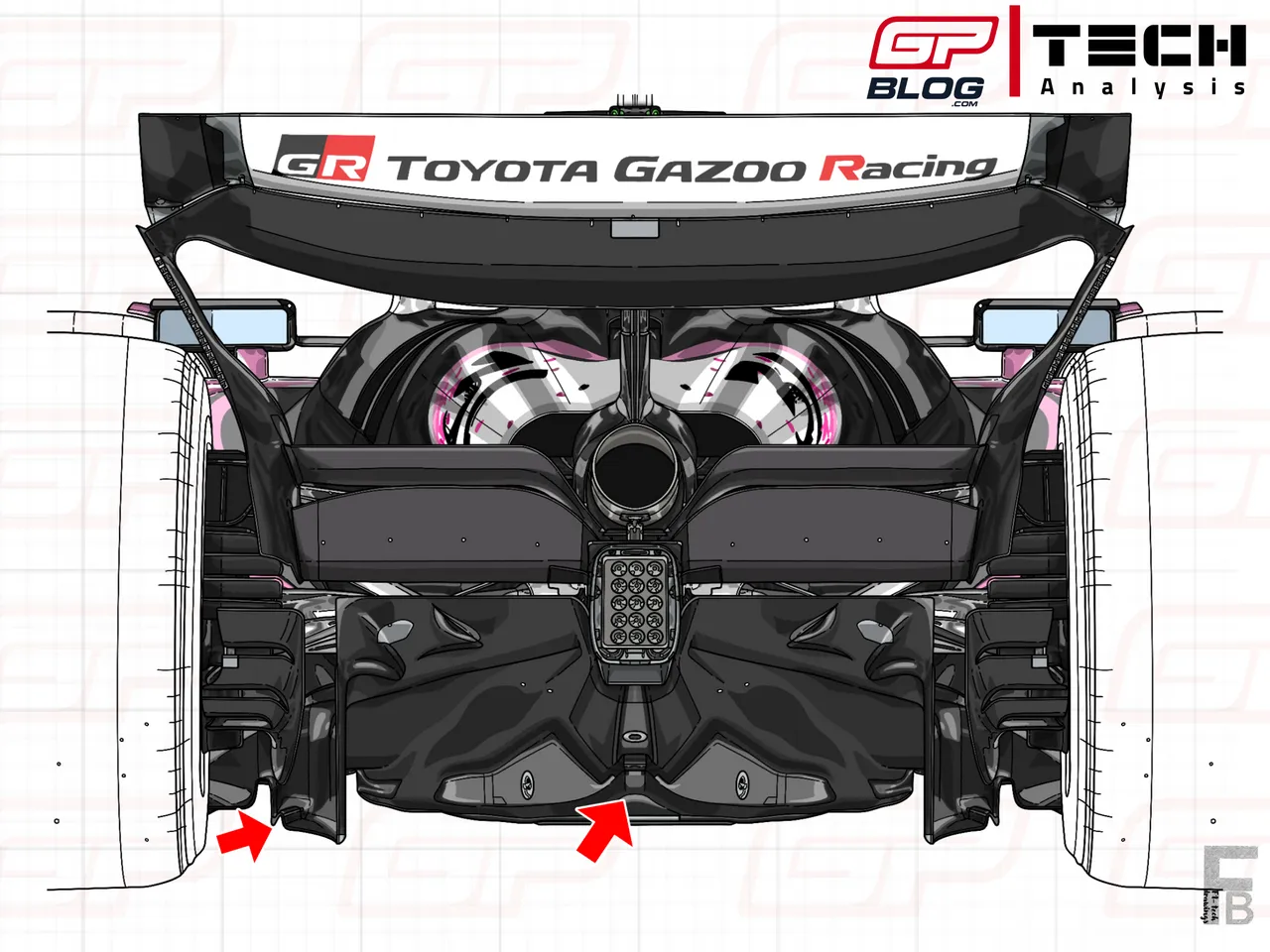
Moreover, the red arrow on the left points at a second hole, placed just behind the mouse hole, very similar to the one seen on the SF-25 in these first three races of the season. The goal is to try to increase the amount of air drawn from the side walls of the diffuser ramp, thus increasing the amount of air that feeds the diffuser.
Not by accident, in fact, this new diffuser design is very similar to the one that was adopted on the SF-24 from Monza onwards last year, just like shown in the drawing below. In that case, Ferrari was trying to solve bouncing as well, which re-appeared with the package they introduced in Spain.
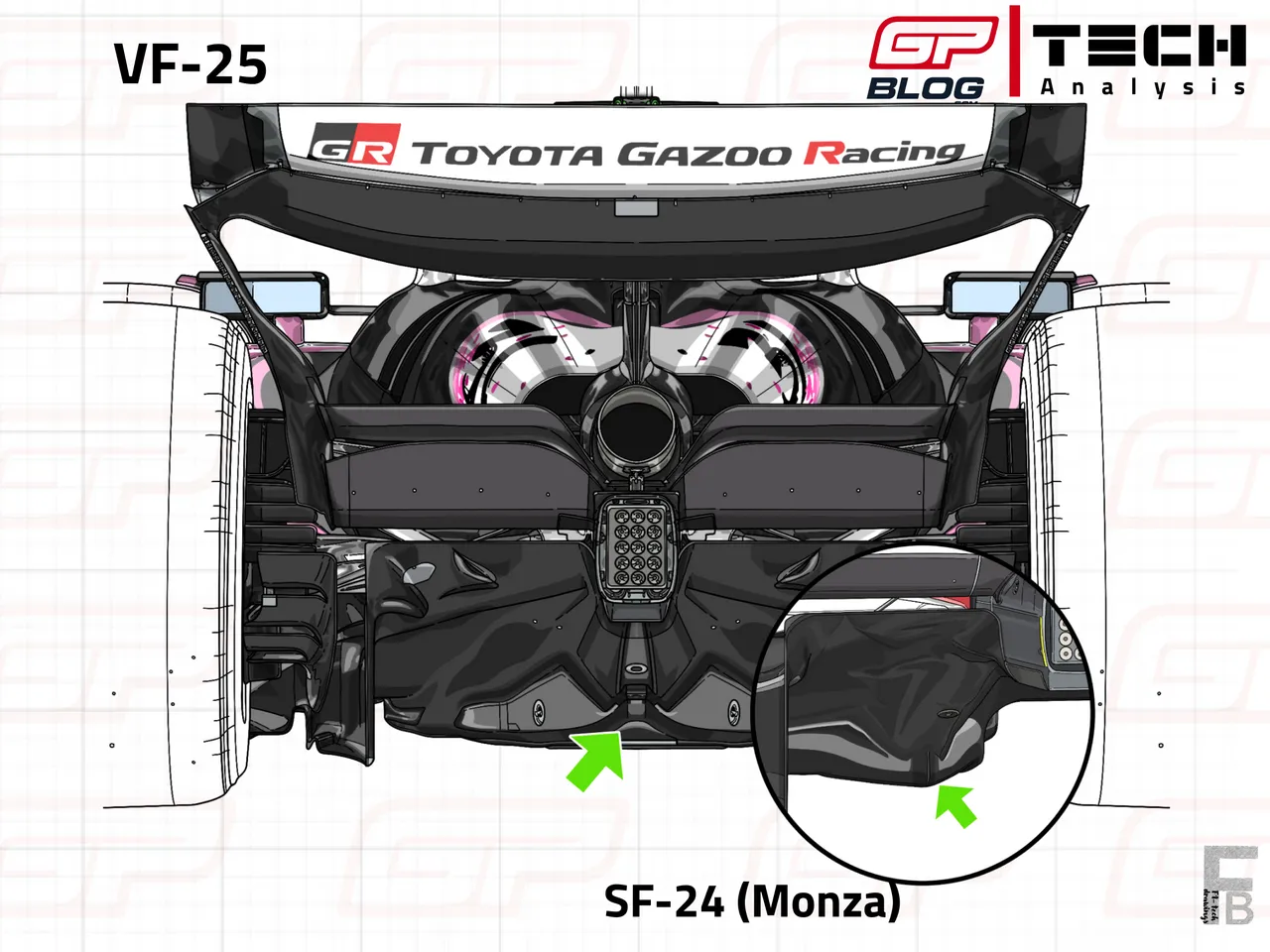
And as had happened for Ferrari last season, this new diffuser immediately worked for Haas too: during FP1 only Bearman adopted it, with Ocon still using the old version to make comparison runs. However, since the team was still cautious running the car at a low ride heights, they kept making tests in FP2 as well, with Bearman still running the new spec. As soon as the VF-25 started to run very low in the first sector, “we (the team) saw the difference straight away” said Komatsu, proving that the new keel was effectively working.
To get a better performance in the high-speed corners through Sector 1, the team had to sacrifice a bit of lap time through slow corners, but the overall performance was very encouraging.
Both drivers kept the new bit on for the whole weekend, but Bearman felt much more confident than Ocon: the young British talent was able to qualify in P10 and finish the race in the same position, mainly thanks once again to the cooler temperature that made a one-stop strategy possible in the race. The pace was good, even though he finished 14 seconds behind Albon in P9, proof that there’s still a lot of work to do to fight for better places.
On the other hand, Ocon struggled for the whole weekend with the car, never managing to make the find the confidence with the updates. After the race on Sunday, in fact, he underlined that he “tried a lot of different things on our cross cars throughout this weekend, but when we went to the new parts that were supposed to get a bit more performance, it didn't quite work on my side.”
In conclusion, it’ll be quite interesting to see how the VF-25 behaves in Bahrain: the lack of high-speed corners will give the team the chance to focus on optimising the performance on slow speed corners, trying to extract the full potential for the car. For sure the higher temperature and the 3 DRS zones could be a disadvantage for the American team, but the great step forward done last weekend is an encouraging sign for the future.
Read also
Popular on GPBlog
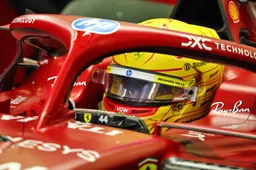
F1 LIVE | Follow Qualifying for the Bahrain Grand Prix!

Longruns back Verstappen and Marko: Red Bull falls short

Qualifying in Bahrain: Piastri pole, Norris bins it, as Russell excels
